Attachable Hand and Beverage Warmer
One step closer to eliminating indoor study space crowding

Defining the Problem
UC Berkeley students face a shortage of indoor study spaces. Most individuals prefer to study in indoor locations as their needs and preferences regarding safety and comfort are not met in outdoor spaces. The lack of outlets, benches and chairs, tables and desks, and other utilities hinder students from studying outside and create crowding in indoor spaces. For my project, I will tackle the problem of comfort while studying outdoors. Later in the portfolio, you will find a more detailed thought process on how I came up with a final solution to such a broad problem.
User Research
Whilst conducting user interviews, I wanted to understand why students avoid studying outdoors. These are a few questions from my discussion guide:
-What are the main aspects you look for in a study space?
-Walk me through the last time you went to study on campus.
-What time of day do you typically go to study spaces? How long do you stay there?
-When is the last time you studied outdoors?
Key Takeaways
After conducting interviews, it becamse apparents that students' two main needs are comfort and safety. These are a few key insights I kept in mind while designing a solution to convert outdoor spaces to be more study-friendly:
-Students tend to study more during the evening and at night
-Students do not feel safe studying outdoors
-Easy access to outlets, food, and transportation is important
-Indoor spaces provide more warmth and comfort than outdoor spaces
Divergent Thinking
Brain Dump
How might we make sure students aren't cold?
- clear cover around chairs that blocks wind
- cover that blows warm air
- heat insulating sheet below desks
- heater pockets under desk surface to keep hands warm
- heater pockets on the ground to keep feet warm
- hand warmer on chairs
- mobile outdoor heaters
Star-bursting

Convergent Thinking
Critical Ideation
Technical Feasibility Graph
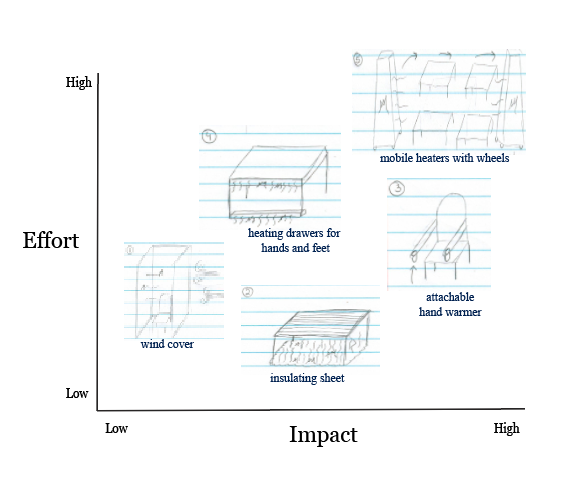
AEIOU Framework
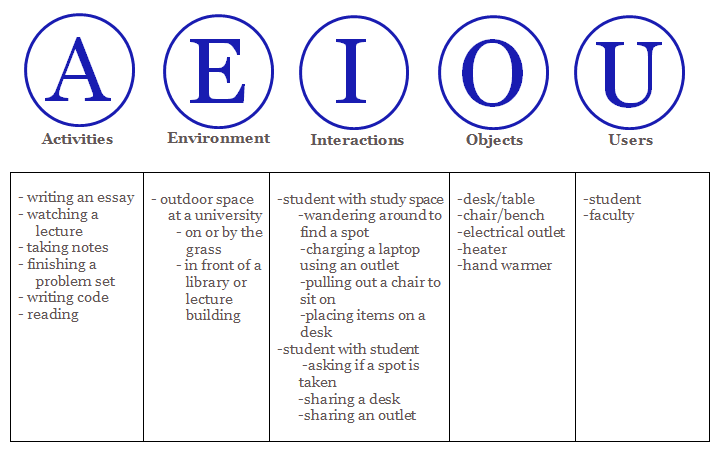
Prototypes
Arriving at a final solution:

Low Mid High
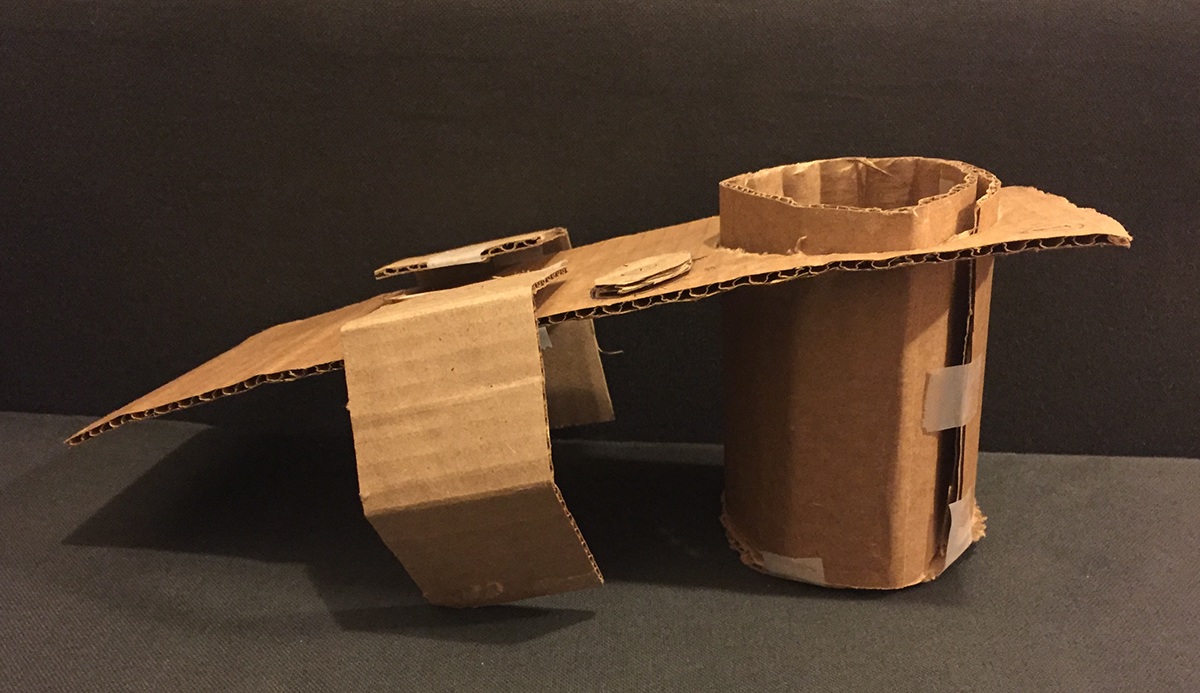


Low-Fidelity
Taking into account interview insights, I created a cardboard prototype of a hand and beverage warmer. The product includes a cup holder with heating technology, a knob to adjust temperature, and clasps to attach to the arm of any chair, may it be wooden, metal, or plastic.
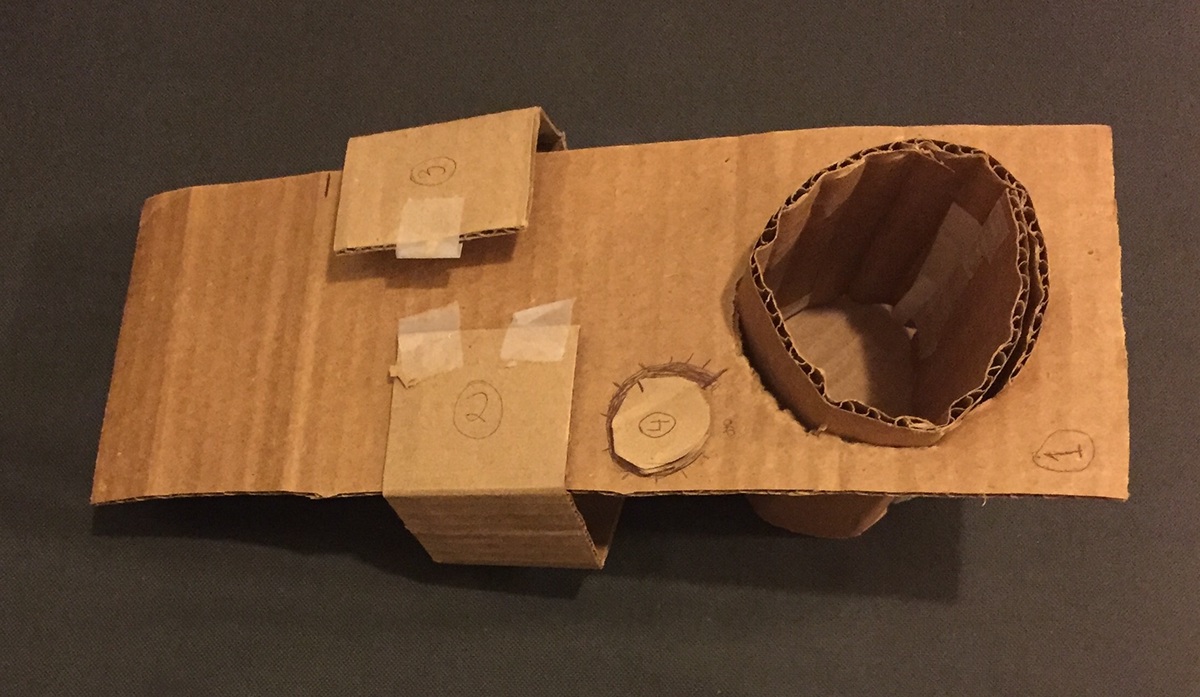
Mid-Fidelity
Taking into account feedback from my low-fidelity prototype, I created a cleaner design for my product. I rounded the edges, used glue instead of tape, placed the clasps underneath the main base, and added rotating functionality to the knob.

Usability Testing
Before creating my final high-fidelity prototype, I conducted usability tests. The key insights I obtained are as follows:
-needs clearer instructions
-a rotating temperature knob is necessary
-hand should fit inside the cup holder
-add a USB port
Improvements part-by-part
Cup Size
create a cleaner design & make sure hand fits inside
Low Mid High



Clasps
place them underneath the base
Low Mid High



Temperature knob
add rotating functionality, insert temperature cues, hide the metal piece
Low Mid High


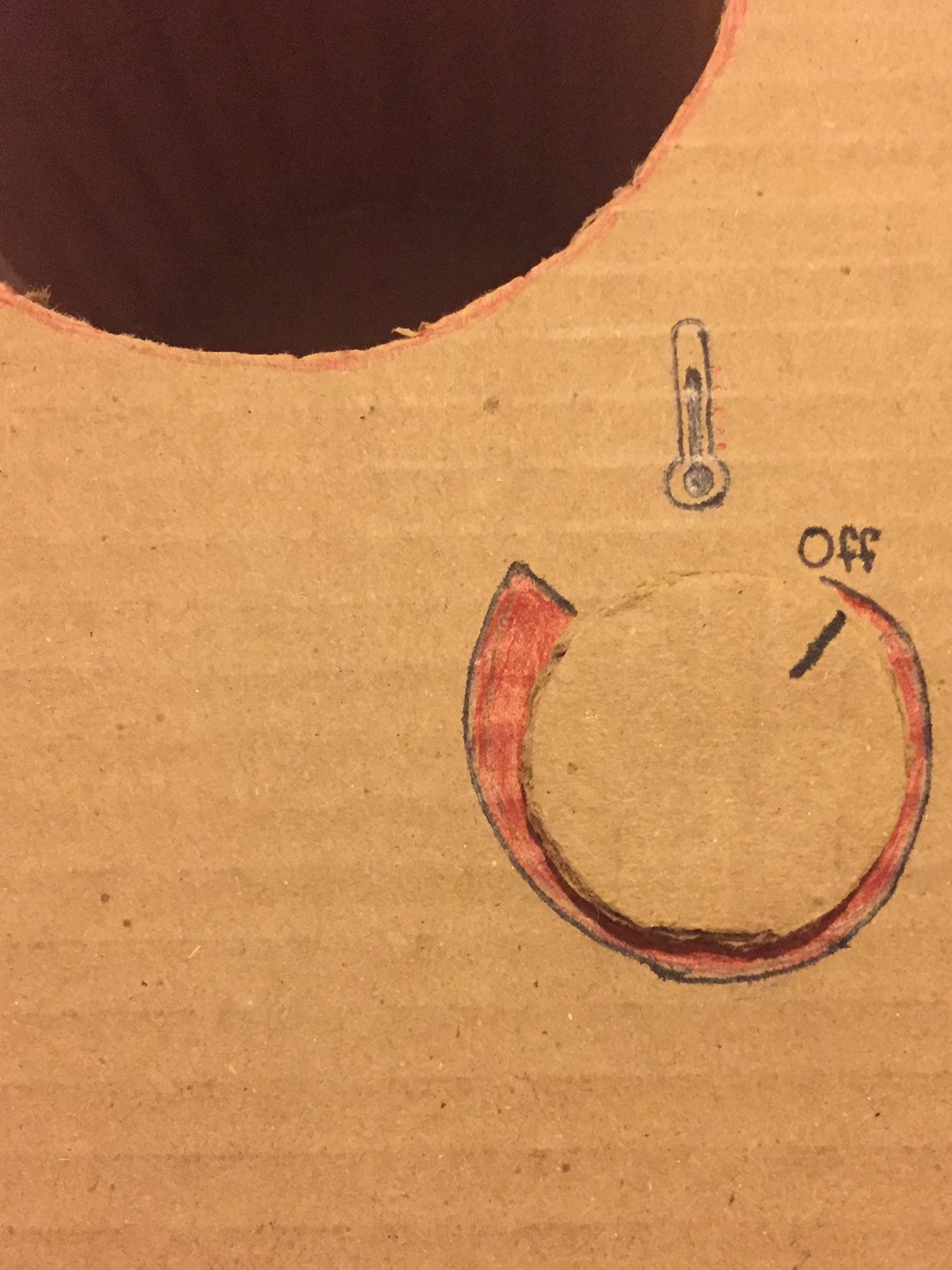
High-Fidelity/Final Prototype
Taking into account feedback from my previous prototypes and criticism from usability testing, this is my final product.
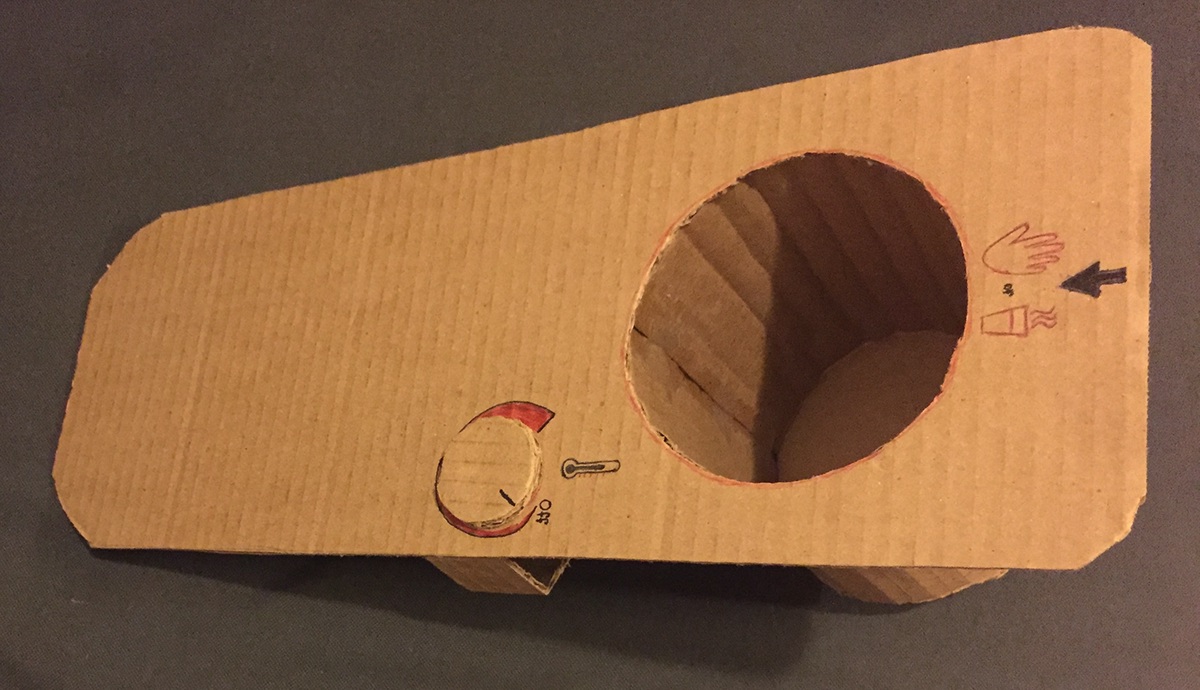
Reflection
This project forced me to use analytical and problem solving skills to create an innovative solution to a bug many students face on a daily basis. By conducting multiple user interviews and utilizing both divergent and convergent ideation methods, I was able to hone into a specific solution to alleviate the problem of indoor study space crowding.
This project allowed me to explore a medium I had previously never worked with--cardboard. It was a unique experience to learn cardboard prototyping, and I learned how important it is to use an exacto knife for clean cuts, use glue instead of tape, use common household objects for simple shape outlines, and more.
I also learned the importance of usability testing. It is a great help to ask potential users about a product because they may provide feedback you never would have thought of by yourself.
Overall, this project was a fun and gratifying experience.

